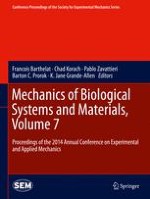2015 | OriginalPaper | Chapter
8. Development of a Microloading Platform for In Vitro Mechanotransduction Studies
Authors : S. L. York, J. D. King, A. S. Pietros, B. Zhang Newby, P. Sethu, M. M. Saunders
Published in: Mechanics of Biological Systems and Materials, Volume 7
Publisher: Springer International Publishing
Activate our intelligent search to find suitable subject content or patents.
Select sections of text to find matching patents with Artificial Intelligence. powered by
Select sections of text to find additional relevant content using AI-assisted search. powered by
